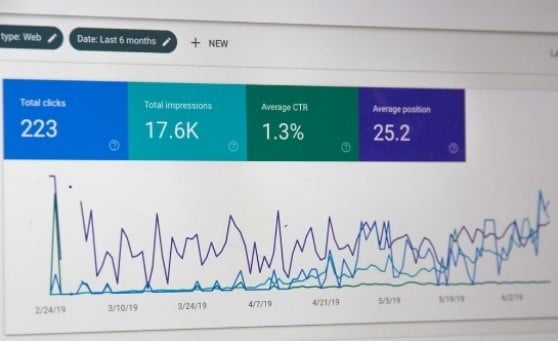Google Featured Snippets – How To Optimise For Them
Google search results are constantly evolving, and features are always changing, to provide more accurate results and a better user experience. One of the more important updates to SERPs in the past decade are Featured Snippets. These can be seen at the top of main listings, pulling relevant content to answer search queries quickly.
A Featured Snippet, therefore, is one of the first items users see when searching for a word or phrase, and often ensures the website shown in the Featured Snippet has the top organic ranking. Capturing the Featured Snippet enables you to quickly gain the top organic rank, and improves overall visibility and brand awareness, making them an integral part of SEO strategy.
Read further to explore the definition and types of Featured Snippets, their importance to SEO and how to optimise for them.
What is a Featured Snippet?
Featured Snippets are short snippets of text that appear at the top of Google’s search results, that give a brief answer to a user’s search query. The content that appears inside a Featured Snippet is automatically pulled from a web page in Google’s index, usually one of the top-ranking pages and include that page’s title and URL.
The four common types of Featured Snippets are paragraphs, lists, tables and videos. The most common snippet type is the paragraph, which accounts for 50% of all snippet results, closely followed by the list (37%), which can be displayed in numerical format or bullet points.
Why are Featured Snippets important for SEO?
In 2016, Moz found that 23% of all search result pages include a Featured Snippet, whilst Ahrefs’ data shows 12.29% of search queries contain a Featured Snippet. Regardless of the exact number, since their introduction in 2014, Featured Snippets have become a prominent feature of Google Search results and consequently, play a crucial role in SEO.
So, how do Featured Snippets influence search and SEO?
- They create a shortcut to the top organic position.
If your site ranks on the first SERP for a query that shows a snippet, capturing that snippet offers a shortcut to top position. As Featured Snippets are pulled from pages that already rank in the top 10, gaining a featured snippet is an effective way to quickly attain the top spot.

- They increase organic traffic.
Though there is a debate as to whether Featured Snippets lead to fewer clicks, as the answer is in the SERP, this isn’t necessarily the case. Many snippets only provide a basic answer, meaning most searchers would want to know more, thus resulting in an increase in site traffic.
- They offer an excellent branding opportunity.
If Google chooses to highlight a site in the Featured Snippet, one can expect an increase brand awareness as well. Featured Snippets are the first result that users see; they’re even more prominent on mobile devices, where they often occupy all the given SERP real estate. This leads to greater brand visibility for relevant topics, driving long term growth and assisting in associating one’s brand as a market leader.
How to optimise for Featured Snippets
Google uses its algorithm to determine which page contains the best answer to a user’s search query to display as a Featured Snippet. However, it is possible to optimise your site in order to earn Featured Snippets. You can do this by following the steps below:
- Do keyword research.
The best way to start is by researching your keywords.
- Utilise tools such as SEMrush, Ahrefs and AWR to find relevant keywords and queries that trigger Featured Snippets.
- As well as snippets your site has already captured and those captured by competitors, which can be used as a guide.

- Target question-type search queries that your audience is searching for, as these are easiest to identify.
- Identify queries with informational intent; according to the aforementioned Ahrefs study, most of the keywords that trigger snippets are long-tail queries without questions.
Tip: The “People also ask” section on the SERP can also help identify similar queries that can be answered on a single page, maximising the number of snippets you might capture with a single piece of optimised content.
- Identify search queries you rank highly for.
As discussed, most Featured Snippets contain content from sites on the first page of SERPs. Therefore, optimising these pages is likely to be the easiest way in which to capture Featured Snippets.
- Use a position tracker to create a list of pages that rank within the top ten for search queries.
- Correlate these with the previously identified queries that have a snippet opportunity, to provide you with a list of existing pages you can optimise for groups of keywords.
- Leverage existing content
Once you’ve identified and grouped these existing pages, you can begin to optimise them.
- First, explore the current snippet holders for a group of keywords; identifying the type of snippet and the content highlighted will give you the basis for your optimisation.
- Locate where on your high-ranking page these search queries are, or could be, answered to begin optimising these sections.
- Google often selects an answer given in a single paragraph, so the ‘inverted pyramid’ writing method is a great way to structure your content; highlight the question as a subheading and immediately follow with a one paragraph answer.
- The answer can be elaborated on in the rest of the article.
- Create new content with Featured Snippets in mind
If there are any snippet opportunities that your site does not have any content for, you can create new content with Featured Snippets in mind.
- New content should not be created for the sole purpose of capturing a snippet.
- The content should be relevant to the business and add value, but answering search queries that are in demand from your audience.

Tip: It’s important to note, Ahrefs found that once a page is featured, it is likely to be featured in a lot of similar queries as well; this means it is good practice to ensure one article answers as many similar questions as possible. FAQ sections and Q&A style blog posts provide an ideal structure for this.
- Pay attention to formatting.
Ensure your information is conveyed in Google’s preferred way.
- If the current snippet displays information in a list or a table, it is ideal to format your content in this way.
- Schema mark-up can be used to wrap lists and highlight main points.
- For paragraphs, ensure you have descriptive headers, header tags and short, factual sentences.
- Relevant imagery can also be included alongside content.
- Follow the optimal word count
Last, but certainly not least, ensure your content is the optimum length. After analysing over 10 million keywords, and 1 million domains, SEMrush found that most featured snippets have an optimal length:
- Paragraph answers (usually 40-60 words)
- Numbered or bulleted lists (up to nine lines)
- Tables (up to nine rows and three columns)
Ensure you’re sticking to this guideline when optimising your content to maximise your ability to earn a Featured Snippet.
Conclusion
Although, it takes a lot of research and planning, optimising for Featured Snippets is a great way to achieve the top organic position, increase overall traffic and brand awareness, and can be done as easily as updating the structure of a blog post or restructuring content into a list. See if you can capture a Featured Snippet today by following these steps.


